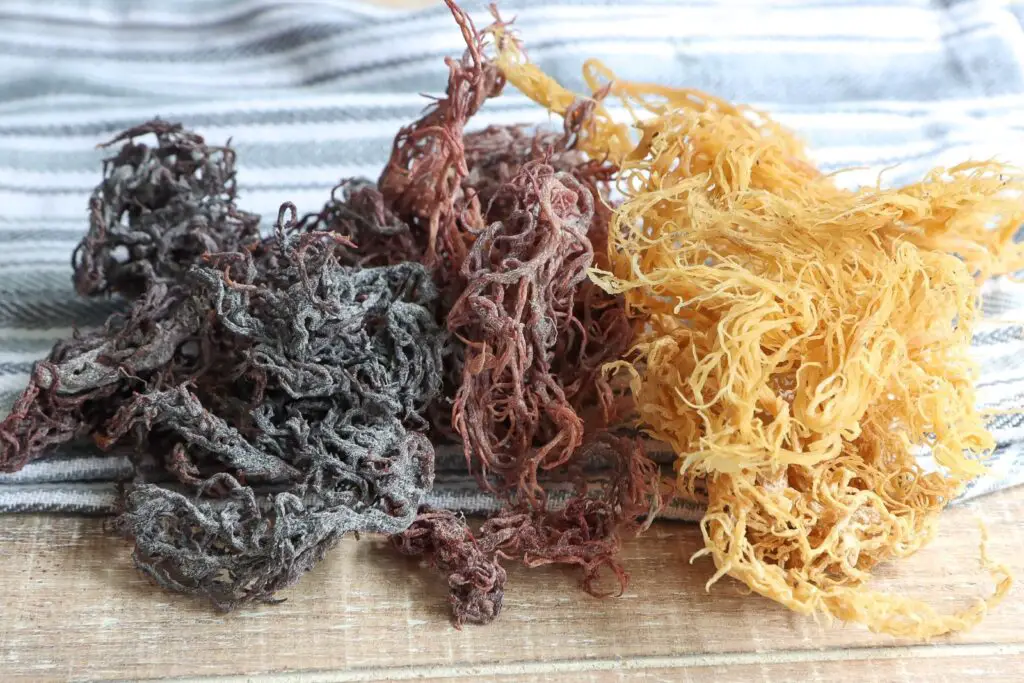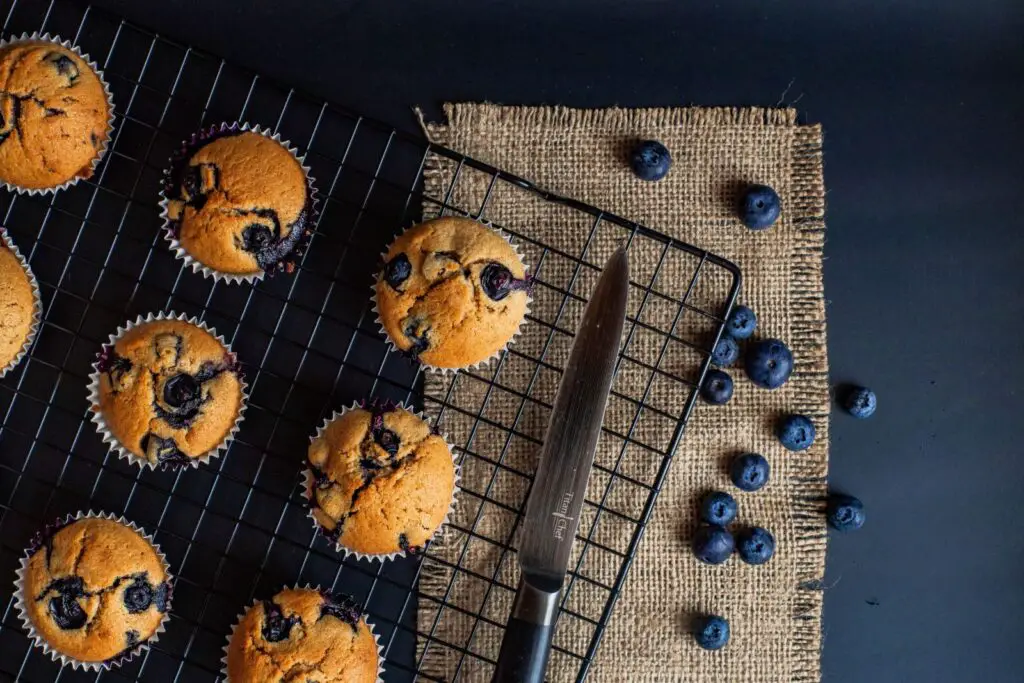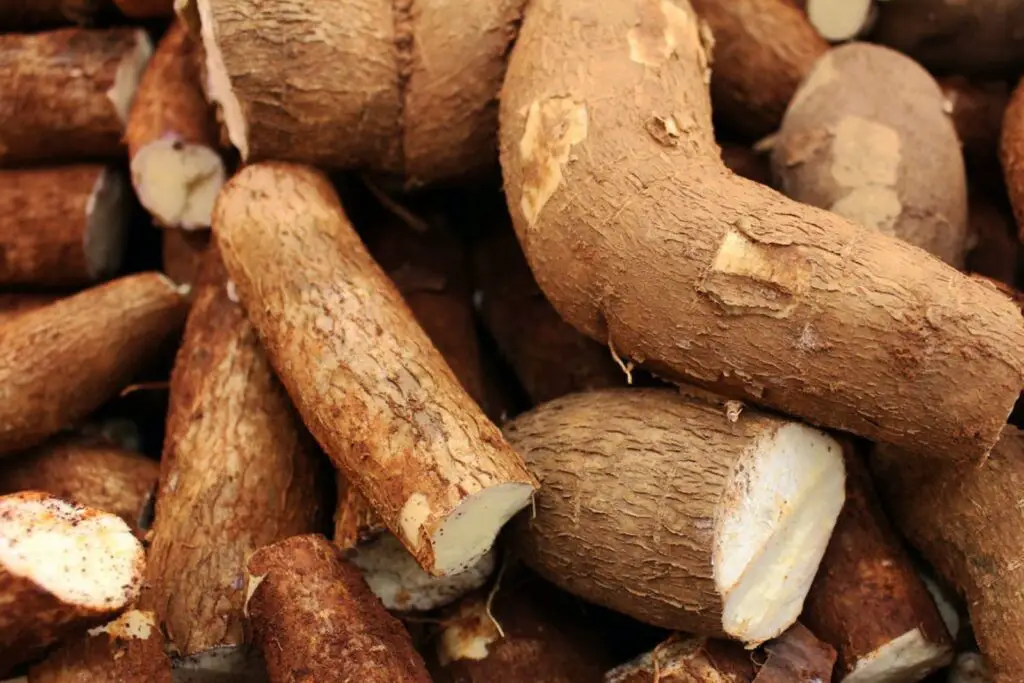
Banana leaves, a versatile and natural wrapping material that has been used in various cultures for centuries. Banana leaves are large, flexible, and vibrant green, making them perfect for a wide range of culinary and decorative purposes. From traditional dishes like steamed fish or sticky rice to festive presentations and beautiful table decorations, banana leaves lend a unique touch of authenticity and visual appeal. However, if you have an abundance of banana leaves or want to preserve them for future use, freezing them is a practical option.
In this guide, we’ll explore the process of freezing banana leaves, sharing valuable tips and techniques to maintain their freshness and integrity, ensuring that you can enjoy the convenience and versatility of these remarkable leaves whenever you need them, whether it’s for cooking, entertaining, or adding a touch of natural beauty to your surroundings.
Here are the simple steps to freeze banana leaves:
Step 1: Select Fresh Banana Leaves
When it comes to freezing banana leaves, the quality of the leaves plays a vital role in ensuring the best results. Here’s a closer look at why selecting fresh, high-quality leaves is crucial:
- Vibrant Green Color: Fresh banana leaves exhibit a vibrant green color. This indicates that they are healthy and have been recently harvested. Avoid leaves that appear dull or have a yellowish hue, as they may be past their prime and won’t freeze well.
- Pliability: Check the leaves for pliability by gently bending them. Fresh leaves should be flexible and easy to manipulate without cracking or breaking. Leaves that are too rigid may not wrap or fold properly after freezing, affecting their functionality in recipes.
- Absence of Blemishes or Tears: Examine the leaves for any visible blemishes, such as brown spots, holes, or tears. These imperfections can indicate damage or decay and may negatively impact the quality and appearance of the frozen leaves. Opt for leaves that are smooth and free from any such defects.
- Size Considerations: Consider the size of the leaves in relation to your intended use. If you plan to use the banana leaves for wrapping small parcels or individual portions, look for smaller leaves that can accommodate these needs. Alternatively, if you intend to use the leaves for larger dishes or as a serving base, select larger leaves that can provide sufficient coverage.
By selecting fresh banana leaves that meet these criteria, you can ensure that your frozen banana leaves retain their vibrant color, pliability, and structural integrity. This, in turn, will contribute to better results when using the leaves in various culinary applications.
Step 2: Wash and Prepare
To ensure the cleanliness and hygiene of the banana leaves before freezing, it is important to follow the proper washing and preparation steps. Here’s why this step is essential and how to do it effectively:
- Removing Dirt, Dust, and Impurities: Banana leaves, like any other fresh produce, can accumulate dirt, dust, or other impurities during harvesting, transportation, or storage. Washing the leaves thoroughly helps eliminate these unwanted elements, ensuring that the frozen leaves remain clean and safe for use in cooking.
- Gently Rinsing Under Running Water: Start by holding the banana leaves under gentle running water. This helps loosen any debris or dirt particles clinging to the surface. Be careful not to apply excessive force or pressure, as this can tear or damage the leaves. The water should be at a moderate temperature, neither too hot nor too cold.
- Using a Soft Brush or Cloth: If the leaves have stubborn dirt or residue, you can lightly brush or wipe the surface with a soft brush or cloth. This step helps remove any remaining impurities and ensures thorough cleaning. Be gentle to avoid tearing the leaves or causing any damage.
- Patting Dry: After washing, it’s important to remove excess moisture from the leaves. Use a clean kitchen towel or paper towels to gently pat the leaves dry. Removing moisture helps prevent ice crystals from forming during freezing, which can affect the texture and quality of the leaves.
By washing and preparing the banana leaves before freezing, you remove dirt, dust, and impurities that might compromise the integrity and cleanliness of the frozen leaves. Properly cleaned and dried leaves contribute to better preservation and maintain the desired quality when used in various culinary preparations.
Step 3: Cut and Divide
Cutting and dividing the banana leaves into manageable sizes before freezing offers practicality and convenience when it comes to handling and using them later. Here’s why this step is beneficial and how to approach it:
- Easier Handling and Portioning: By cutting the banana leaves into smaller, manageable sizes, you make it easier to handle them during thawing and preparation. Smaller pieces are more convenient to work with when wrapping food or lining cooking surfaces. They also allow for more precise portioning, especially if you only need a portion of a leaf for a particular recipe.
- Trimming the Tough Central Rib: Banana leaves typically have a tough central rib running through their length. Before cutting the leaves, you can trim off this rib, as it can be less pliable and more fibrous compared to the rest of the leaf. Removing the central rib makes the leaves more flexible and easier to fold or wrap.
- Rectangular or Square Pieces: Depending on your preference and intended use, you can cut the banana leaves into rectangular or square pieces. Rectangular shapes are ideal for wrapping long items, such as fish or meat, while square shapes work well for smaller parcels or individual servings. Choose sizes that best suit your specific culinary needs.
- Freezing Whole Leaves: If you anticipate using the entire leaf in your recipes, freezing them as whole leaves is a viable option. This method simplifies the freezing process and preserves the leaves in their natural form. However, keep in mind that thawing whole leaves may take longer compared to smaller, cut pieces.
By cutting and dividing the banana leaves before freezing, you enhance their usability and convenience. This step allows for easier handling, portioning, and customization according to your specific cooking requirements. Whether you opt for smaller pieces or freeze the whole leaves, the choice depends on your intended use and personal preference.
Step 4: Pack for Freeze
Proper packaging is crucial when freezing banana leaves to preserve their quality and prevent freezer burn. There are two effective options for packaging: wrapping each leaf individually or stacking cut leaves in an airtight freezer bag. Here’s a closer look at each method and why they are effective:
Individually Wrapping in Plastic Wrap or Aluminum Foil:
- This method involves wrapping each banana leaf individually in plastic wrap or aluminum foil.
- Individually wrapping the leaves provides better protection against freezer burn and helps maintain their freshness.
- It allows you to easily thaw only the necessary amount of leaves without exposing the entire batch to the thawing process.
- When wrapping, ensure the entire leaf is covered, sealing it tightly to prevent air and moisture from entering. This helps preserve the texture and flavor of the leaves during freezing.
Stacking and Freezer Bag:
- Another option is to stack the cut banana leaves together and place them in an airtight freezer bag.
- Stack the leaves neatly, ensuring there is no excessive overlapping or folding that can cause damage or deformation.
- Before sealing the bag, try to remove as much air as possible to minimize the risk of freezer burn.
- An airtight freezer bag provides a protective barrier against moisture and air, preserving the quality of the banana leaves.
Both methods effectively protect the banana leaves from freezer burn and help maintain their integrity. Choose the method that suits your needs and available storage space. Whether individually wrapped or stacked in a bag, the goal is to prevent exposure to air and moisture, thereby ensuring the frozen banana leaves retain their freshness and quality until ready for use.
Step 5: Label and Store in the Freezer
Labeling and proper storage are essential steps in freezing banana leaves to maintain organization, track freshness, and prevent potential waste. Here’s why labeling and storage are crucial and how to approach them effectively:
Labeling with Date of Freezing:
- Labeling the packages with the date of freezing allows you to keep track of the freshness and rotation of the banana leaves.
- Use a permanent marker or adhesive labels to write the date clearly on each package. Include the month, day, and year of freezing.
- This labeling practice ensures that you can identify the oldest packages and use them first, preventing the leaves from staying in the freezer for too long and potentially losing quality.
Proper Storage in the Freezer:
- After labeling, place the wrapped or bagged banana leaves in the freezer promptly.
- Ideally, store the packages in a flat position to prevent them from getting bent or folded. Flat storage helps maintain the shape and integrity of the leaves.
- Make sure the freezer temperature is set appropriately to maintain a consistently cold environment, preferably at or below 0 degrees Fahrenheit (-18 degrees Celsius).
- Avoid storing the banana leaves near the freezer door or in areas that experience temperature fluctuations to minimize the risk of thawing and refreezing, which can impact the quality of the leaves.
Storage Duration:
- Frozen banana leaves can maintain their quality for up to six months when stored properly.
- While they can still be safe to consume beyond this timeframe, the quality may gradually decline due to potential freezer burn or loss of flavor and texture.
- To ensure optimal results, it’s best to use the frozen banana leaves within the six-month timeframe.
By labeling the packages with the date of freezing and storing them properly in the freezer, you can maintain organization, track freshness, and minimize potential waste. These practices help ensure that the frozen banana leaves retain their quality and are readily available for use whenever needed in your culinary endeavors.
Step 6: Thaw the Frozen Banana Leave
Thawing frozen banana leaves correctly is crucial to preserve their texture, flavor, and overall quality. Here’s why proper thawing is important and the recommended method for thawing and using frozen banana leaves:
Preserving Texture and Flavor:
- Thawing frozen banana leaves gradually helps maintain their texture and flavor.
- Slow thawing allows the leaves to regain their flexibility and pliability without becoming overly soft or mushy.
- Rapid thawing methods, such as using a microwave or hot water, can lead to uneven thawing, resulting in a loss of texture and potentially affecting the overall quality of the leaves.
Recommended Thawing Method:
- The ideal method for thawing frozen banana leaves is to transfer the desired amount from the freezer to the refrigerator.
- Place the packaged leaves in a flat position in the refrigerator and let them thaw slowly overnight or for about 8 to 12 hours.
- The refrigerator’s cool and controlled environment allows for a gradual thaw, helping the leaves regain their natural texture while minimizing the risk of spoilage.
Using Thawed Banana Leaves:
- Once the banana leaves have thawed completely, they are ready to be used in various recipes.
- Thawed banana leaves are commonly used for wrapping steamed fish, grilling meats, or as a base for serving traditional dishes like Thai sticky rice.
- When using the leaves, gently unfold or unwrap them, being careful not to tear or damage their delicate structure.
- If you have thawed more leaves than needed, you can refreeze the remaining portion promptly to maintain their freshness and quality.
By thawing frozen banana leaves slowly in the refrigerator, you ensure that they retain their texture and flavor. This method allows for easy handling and use in a wide range of culinary applications. Remember to handle thawed leaves with care to prevent any damage and promptly refreeze any unused portions to maintain their quality for future use.
Other related questions
Can you refreeze banana leaves?
No, it is not recommended to refreeze banana leaves. Once thawed, banana leaves should be used immediately or stored in the refrigerator for a short period of time. Refreezing the leaves can negatively impact their texture, flavor, and overall quality.
How do I know if the banana leaves have gone bad after being frozen?”
After being frozen, banana leaves can go bad if they have been stored for too long or improperly. Signs of spoilage include discoloration, a foul odor, or a slimy texture. If the frozen banana leaves exhibit any of these indicators, it is advisable to discard them to prevent potential foodborne illnesses.
What are other methods for freezing banana leaves?
Aside from individually wrapping or bagging banana leaves, another method for freezing them is blanching. To blanch banana leaves, briefly immerse them in boiling water for a short period and then transfer them to an ice bath to cool. Once cooled, pat them dry and package them for freezing. Blanching helps preserve the color, texture, and flavor of the leaves and can be a suitable option for those who prefer this method over direct freezing.
Do frozen banana leaves retain their flavor and aroma?
Frozen banana leaves can retain some of their flavor and aroma, but they may experience a slight loss compared to fresh leaves. The freezing process can affect the volatile compounds responsible for the distinct aroma of banana leaves. However, when properly stored and used within the recommended time frame, frozen banana leaves can still impart a desirable taste and aroma to dishes.
Can frozen banana leaves be used for making traditional dishes from specific cuisines?
Yes, frozen banana leaves can be used for making traditional dishes from specific cuisines. Banana leaves are commonly used in various cuisines, such as Southeast Asian, Caribbean, and Latin American. Thawed frozen banana leaves can be utilized for wrapping and steaming foods like tamales, sticky rice, or grilled fish, imparting a unique flavor and aroma to the dishes. They are a versatile ingredient in traditional cooking, adding authenticity and visual appeal to the final preparations.
Can frozen banana leaves be used in cooking?
Yes, frozen banana leaves can be used in cooking. Thawed banana leaves are commonly employed in various culinary traditions as a natural and aromatic wrapping material. They can be used to steam, grill, or bake a variety of dishes, such as tamales, sticky rice, fish, or even desserts like leche flan. The leaves impart a distinct flavor and fragrance to the food, enhancing the overall culinary experience.








